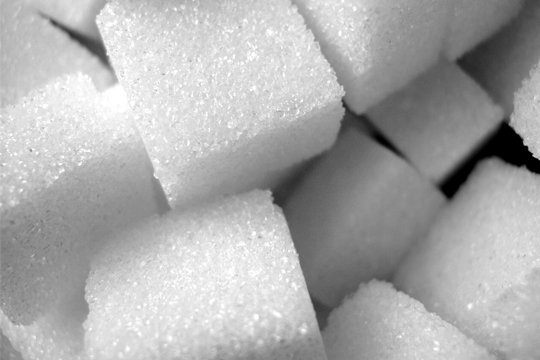
Reducing Food Waste in Foodservice
October 16, 2018 by Doreen Garelick, Dietetic Intern
Our intern Doreen attended a food waste summit for restaurants and compiled these tips to help food service operators redirect…
Nutrition 101
August 7, 2012

This week, SPE Certified Culinary Nutritionist Andrea Canada clarifies the confusion surrounding sugar labeling.
Nutrition labels are currently packed with information to help consumers know more about what’s actually in their food. Labels are required to include the total grams of sugar in a food, but the sugar content of a food includes two types of sugar - sugars found naturally in the ingredients, and added sugar.
Added sugar is receiving quite a bit of attention lately. Guidance from the American Heart Association (AHA) and USDA’s My Plate recommends that Americans reduce the amount of added sugar in their diets. In addition, the World Health Organization recommends that less than 10% of your recommended daily calories should come from added sugar. The AHA recommends 100-150 calories a day from added sugar, depending on how many calories you require (note a teaspoon of sugar is about 16 kcal). At 4kcal/g, that’s anywhere from 25-50g of added sugar a day.
The trouble is that it's hard for the average American to know how much added sugar is in his or her food, since both natural and added sugars are combined into one number on a food label. Therefore, the FDA is considering requiring food labels to break out the amount of added sugar in a dish. As a dietitian, I can appreciate the idea that providing more information to consumers will help them to make educated decisions about what they’re eating - but all this talk about added and natural sugars can be quite confusing.
Sugars are simple carbohydrates which our body breaks down for energy. Sweeteners like sugar (whether white, brown, powdered, cane or beet derived), corn syrup, high fructose corn syrup, maple syrup, honey, agave and molasses are almost entirely composed of sugar. However, sugars are also naturally present as fructose in fruits and lactose in dairy products. Therefore, something like fruit yogurt includes both natural sugars from the yogurt and fruit as well as added sugar to add sweetness.
At SPE, we break out the added and natural sugars in our nutritional analysis so that diners can be aware of it and to be as transparent as possible. Until added sugar is on a nutrition label, you can look at the ingredients list to see where sugar is listed (ingredients are listed by weight, so if any form of sugar is near the top or if several different types of sugar appear, it’s likely there’s a decent amount of added sugar in the food). While candy and sugar-sweetened beverages obviously have added sugar, some other foods to check the ingredients for sugar include sports drinks, sweetened teas and coffee drinks, fruit yogurts, cereals, and some dried fruits.

October 16, 2018 by Doreen Garelick, Dietetic Intern
Our intern Doreen attended a food waste summit for restaurants and compiled these tips to help food service operators redirect food waste from landfills.
Nutrition 101

Nutrition 101
September 26, 2018 by Doreen Garelick, Dietetic Intern
Ever notice headlines about rapid weightloss? Dietetic Intern Doreen Garelick looks deeper into a recent eye-catching headline to see if there's any truth behind it.
Connect
 Follow us on Twitter
Follow us on Twitter Friend us on Facebook
Friend us on Facebook Follow us on Pinterest
Follow us on Pinterest Follow us on Instagram
Follow us on Instagram Read our Blog
Read our Blog Watch videos on YouTube
Watch videos on YouTube Watch videos on Vimeo
Watch videos on Vimeo Connect with us on Linkedin
Connect with us on Linkedin Find us on Foursquare
Find us on Foursquare
Tweets by @SPEcertifiedBlog Search
Categories
SPE Certified Newsletter
Sign up for news on the latest SPE-certified venues, events and SPE updates.
We will never share your personal information with a third party.